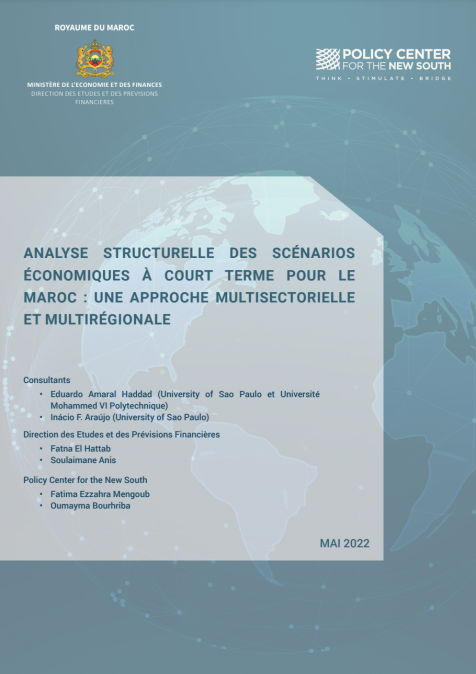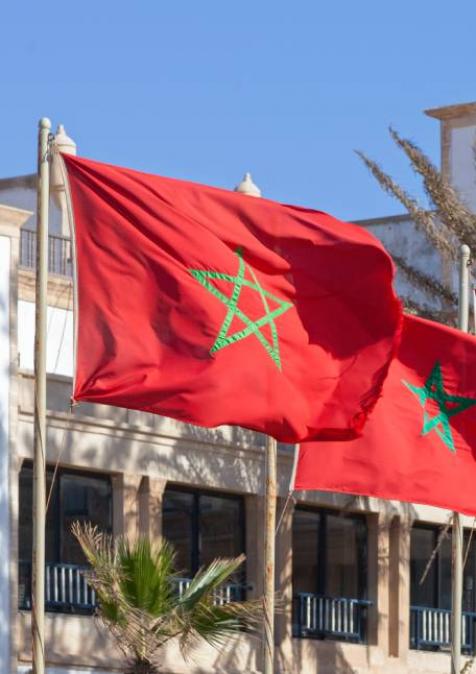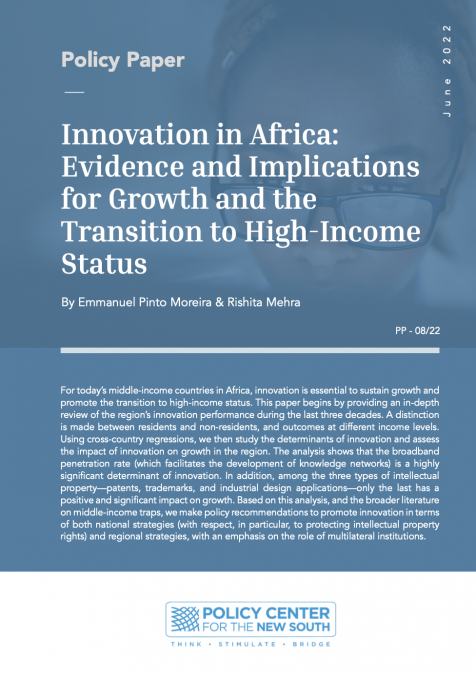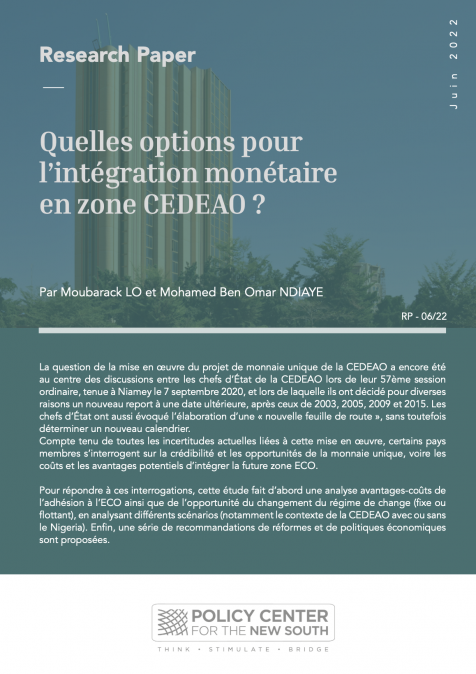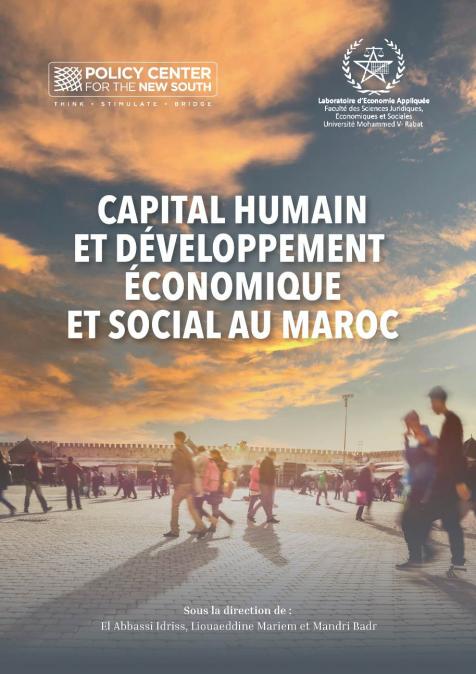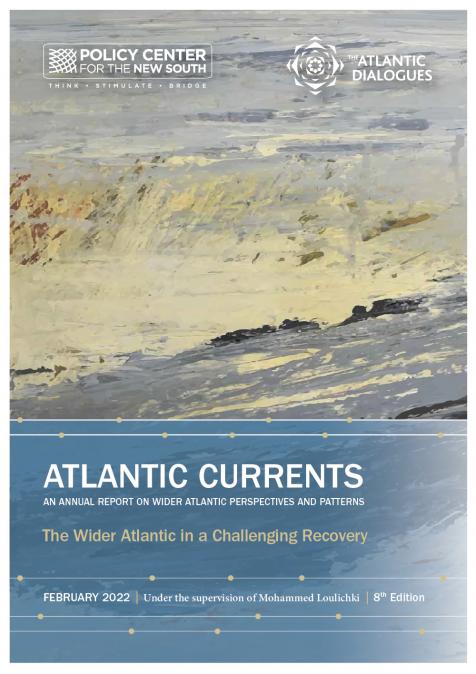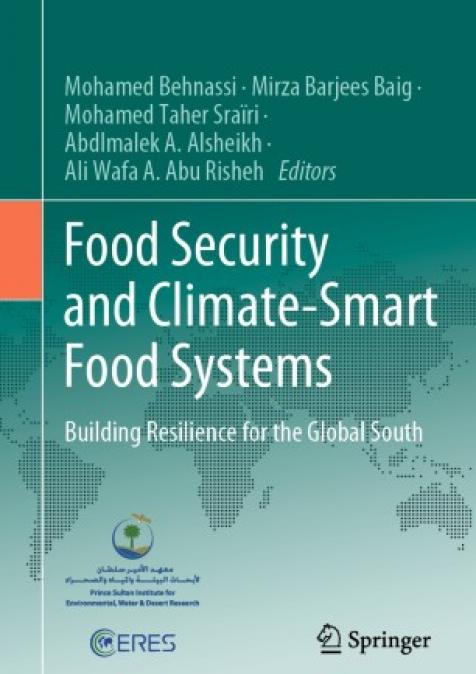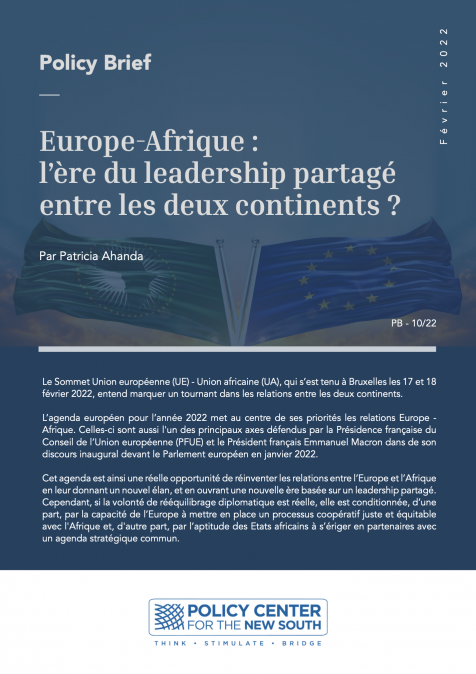Publications /
Opinion
The economic growth of the African continent and its positioning as an emerging force is a reality no longer questioned. Optimism surrounding the Africa rising narrative is supported by a growing young workforce, an expanding middle class, new discoveries of natural resources and minerals, relative political stability and infrastructure developments. Economic and international financial actors now recognize the potential that the continent represents for the world economy, consider diligently taking part in this process, and hope to benefit from it.
This blog post first aims to describe a set of favorable factors that the African continent has been experiencing on the economic level. It will then argue that in the medium term, this reconfiguration of factors is set to continue, on the condition that efforts to converge between public and private sectors are maintained. It hence outlines a few priorities for action that could better channel the enthusiasm expressed by the international community into Africa’s growth. This could lead African leaders – across business and government realms – to make choices designed to accelerate structural transformation and make the shift toward the ambitioned inclusive and sustainable development path.
The Talk
The progress that Africa recorded on the economic, political and social levels has confirmed that vulnerability and instability are not unavoidable. As the economic activity in the continent has registered an unprecedented dynamism, with growth rates amongst the highest worldwide, Africa, in its diversity, is perceived as the second most attractive destination for business and investments in 2014, whereas it was holding the 5th position on a total of 10 regions, in 2013. In addition, African economies have globally demonstrated resilience to external shocks, in a strongly integrated world, where several of the latter surrendered to financial and economic crises.
At the macroeconomic level, domestic and external imbalances have, and continue to, recover over the years, leading to a favorable environment to initiate the process of economic transformation and inclusive growth. In parallel, Africa is associated to further advantages in the long run. The expanding middle class that constitutes a potentially high educated young workforce at relatively low costs, is making the consumption market increase substantively.
In 2010, approximately one third of the African population was part of the middle class. In this regard, forecasts project the continuous increase of this class, expected to reach 1.1 billion people, or 42% of the African population in 2060, according to the same report. Furthermore, African countries already started engaging in attempts to translate economic growth into better opportunities for their populations. Sub-Saharan Africa for instance achieved the largest gains in life expectancy between 2000 and 2010, with an increase of five years. Achievements of a similar amplitude are to be found in the educational sector as well, placing the continent on the emergence path.
All these features are shaping the global competitiveness of the African territory, leading to an environment more favorable to attract investments and business. For instance, investment projects in booming sectors such as finance, telecommunications and media, as well as industrial products targeted to final consumption, have increased to more than 50% of total projects in 2013, instead of 38% on average during the period 2003 – 2007. According to a recent African Development Bank report, combined public and private financial flows to Africa rose by 400% since 2000 and were projected to exceed $200 billion in 2014.
In a globalized world where global value chains offer potential for structural transformation, African countries can now integrate into a specific sector value chain, while leapfrogging some steps throughout the process. In the past, for a country to industrialize, it had to develop the domestic knowhow required to perform the major steps in the value chains of complex manufactured products. Today, through the integration into an international connected production network, countries can establish a specific section of a product’s value chain without having all the upstream capabilities in place. Therefore, global value chains, and Africa’s ability to access the latter, hold the promise of boosting employment and structural transformation in the continent. Structural transformation entails the movement of resources from less productive activities to these newer ones, raising overall productivity.
African countries are endowed with abundant mineral resources, and the boom of the 2000’s in their prices have largely fueled the surge in the economic growth of the continent. Fully taking advantage of their natural resources endowment gives to the African economies an opportunity to foster their process of structural transformation through a trickle-down effect; job creation, skill development, and increased linkages with the other sectors of the economy. Local processing of raw commodities and integration of the extractive sector with the rest of the economy are ways through which African countries can harness their natural resources’ endowments to foster economic growth, while at the same time tackling the important challenges they pose in terms of governance, environmental sustainability and financing.
The private sector development is widely recognized by the international community as an engine of sustainable and inclusive economic growth. The reinforcement of the private sector and investment in infrastructure are strongly tied. As clearly demonstrated by the private sector development strategy, 2013-2017, designed by the African Development Bank Group, a strengthening of investment and business climate in Africa implies the development of private sector and infrastructure, as complementary strategies to foster economic growth. As a matter of fact, the International Finance Corporation funding of the World Bank Group surpassed $1 billion for infrastructure and natural resources projects in 2012. Across Africa, infrastructure contributed 99 basis points to per capita economic growth over the period 1990 to 2005 compared to only 68 basis points for other structural policies. Not only the availability of infrastructure, but also its quality, are amongst the major prerequisites of growth sustainability.
In this respect, the private sector can be the foundation for growth and development, while having the capacity to operate in a challenging environment. Partnerships between the private and public sector can be established in developing both hard and soft infrastructure. In the medium term, this reconfiguration of favorable factors is set to continue, on the condition and that young entrepreneurs, project leaders, and other major stakeholders to the process are given the opportunity to propel the economic transformation of the continent to the next level.
Walking the Talk…
Accelerating the economic transformation of Africa and most importantly, stimulating development means translating the continent’s recent growth - driven circumstantially by commodity production and raw material exports - into meaningful job creation and relevant linkages to other sectors of the economy. Realizing the continent’s full potential implies channeling energy from young populations through partnerships, leadership, advocacy and dialogue into concrete initiatives.
- Building partnerships
Building lasting partnerships with the government, the private sector, and academia to help build technical and managerial capabilities, and foster technology transfers, requires as many instruments to support the sought economic growth. As Africa is becoming a key destination for investment, connecting between the resources, a vibrant culture, and most of all, a talented, entrepreneurial population may prove to be a useful catalyst for action. At the heart of these partnerships is economic integration.
Efforts should converge into exploring in depth the benefits of an increased cooperation among the countries of the global south, and examining policy options to enhance south-south cooperation within larger international partnerships. In the agricultural field for instance, there exist opportunities to share experiences and draw lessons from the success stories of countries such as India or Brazil, and to strengthen bi or multilateral multidisciplinary ties in an effort to share resources and knowledge within areas of common interests.
- Cultivating transformational leadership
Accompanying the commodity boom that fueled growth over the past decade puts greater pressure on the countries’ leaders to diversify the sources of growth. Transformative creative choices need to be communicated to the public in a way that causes change in individuals and social systems. Whether they are political, economic or social, leaders who build communities to inspire and induce positive dynamics while adapting to constant change, should find platforms that sustain their energy.
Mentoring young initiative-risk takers, problem solvers, and innovators as they challenge the existing frameworks and carry energizing visions, will cultivate transformational leadership in emerging countries. Over the past couple of years, public and private actors in Morocco have been highlighting the importance of leadership. Community building initiatives such as Tarik Ibn Ziad Initiative have been gaining ground, spawning a growing interest amongst young political and civil society leaders.
- Fostering advocacy platforms
Whether through global forums, prizes and rewarding programs or fact based research and trainings, advocacy oriented initiatives are key features which could shape both policy discourse and actions towards important development issues. These people-centered initiatives, and participatory public policy formulations are innovative advocacy platforms which can help build resilience while enabling positive interactions in a collective and dynamic way with public and private leaders. The Ibrahim Prize is a good example of an innovative tool which advocates for changing perceptions of African leadership by showcasing exceptional role models from the African continent. Good governance and leadership, economic transformation, south-south cooperation, green economy, gender equality, food security, cultural and religious diversity etc. are equally important issues that need to be addressed in various forms.
- Forging networking opportunities
Young leaders have the energy, courage, and resilience to innovate. Emerging leaders are the driving force behind development, growth, and innovation around the world. In particular, the African Diaspora represents a valuable pool of policy experts, leaders, and entrepreneurs who have the will to engage, share ideas, and invest in the continent’s future and connectivity. Local and international communities can both equally give the next generation of leaders the opportunity to reinforce the potential of the southern Atlantic by developing integration into global value chains policies, partnerships between public and private and international actors, natural resources transformation strategies.
Engaging and sustaining partnerships requires continuous dialogue and mutual understanding amongst young leaders facilitated by networking programs. These initiatives give opportunities to draw lessons from the development experiences in other regions as fostered by programs such as the African Leadership Network, a membership community of influential new-generation leaders in Africa whose mission is to create and strengthen relationships between these leaders to encourage intra-African collaboration.
Although most of the Africa Rising narrative is fact based, there remain risks to the described global recovery experienced in the continent, originating from several sources: increased geopolitical tensions and their repercussions for commodity markets, shocks in financial markets, macroeconomic disappointments in important regions, etc. In all these cases, global trade and interconnectedness can act to transmit and amplify shocks, unless resilience is strengthened, opportunities to benefit from existent favorable factors are ceased and potential fully realized. Advocate to promote, partner to learn and teach, lead to inspire and induce change, and network to propel ideas to the next levels represent the toolkit to be carried by the private sector and policy oriented institutions.

